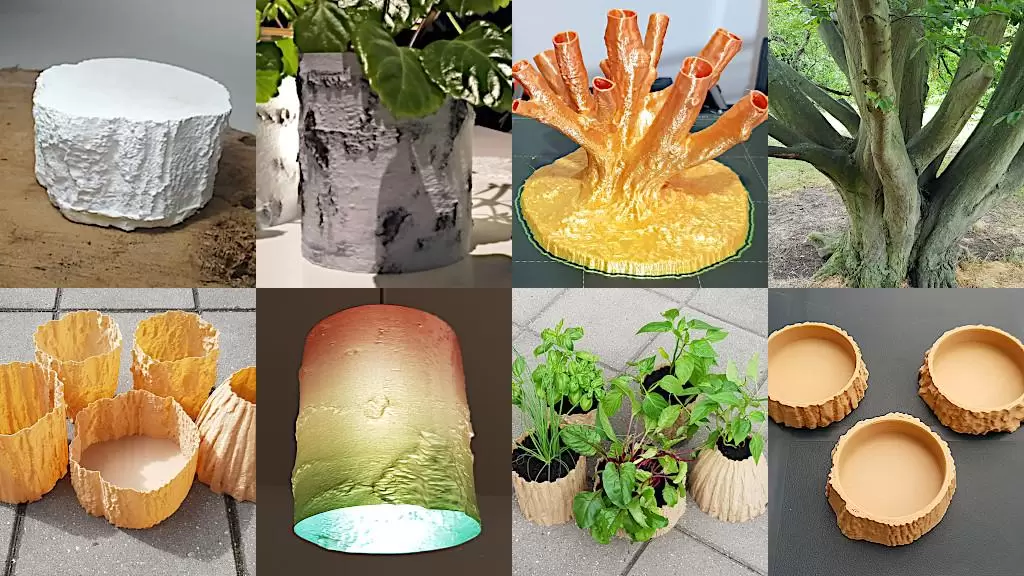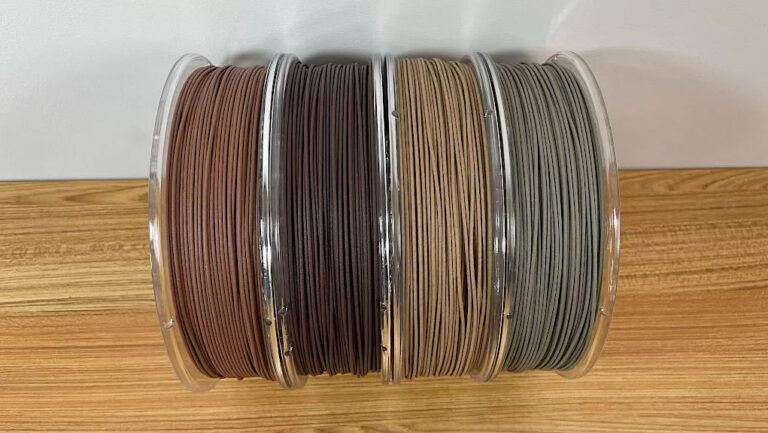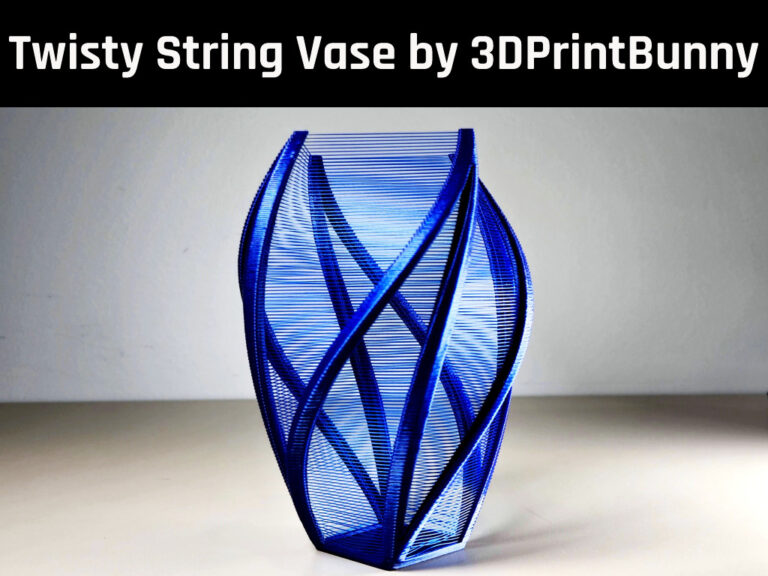How artist use wood filament?
Tree texture to 3D prints by Max Funkner
Published on 18 May, written by Laila
A good maker does not focus on one simple idea but rather combines multiple elements into one perfect concept. Max Funkner is a great example of such an artist. He printed a 3D scan of a piece of wood with the usage of filament containing chops of real wood – Timberfill
Have you heard of Timberfill?
“To test Timberfill was something special. The four colors are gorgeous, and now four more shades have been added to their collection. This wide range of colors added even more fun, as we can play with different shades featuring various combinations.” Excepting marvelous diverse colors, Timberfill represents a composite filament with a strong resemblance to and characteristics of real wood and similar mechanical features such as PLA. It releases a pleasant aromatic smell of wood during the printing process, and shortly after. The postprocessing of this filament is quite easy, as the printed objects can be stained and sanded with standard sandpaper. Made of natural ingredients, it is biodegradable too.
A product with additional Value
“It is a collection of design and 3D print ideas of what can be made from 3D scanned trees. There are many trees that carry a piece of history, or sentimental value, or that are rare varieties in some well-kept gardens.” There are a lot of ideas on how to upgrade the interior with various objects and decorations such as lampshades, planter pots, coasters, penholder, and many others. Having a unique decorative object can change the look of the whole room. “What strikes the most is that the process of creating them is very easy. Thanks to photogrammetry, it is possible to get an original lampshade that can remind us of a favorite tree.” So not only is the lampshade a perfect decoration, it can be a very personal unique object. ”We would like to encourage people to follow this idea and, together with the 3D printing technology, to achieve original and unique results using local trees.“
Always stick to the right settings
The Scanned Tree Trunk Lamp Shade was printed in a vase mode. This way of printing has no retractions, the flow of the filament is continuous and the wood particles will not burn and block the nozzle. Max advises that this makes the vase mode the safest for Timberfill. “Although the recommended nozzle size is 0.5 mm, most consumer and budget 3D printers are equipped with 0.4 mm nozzles, so I tried to minimize the risk of nozzle-blocking. I cleaned the nozzle between the prints and increased the speed so the wood particles would pass through the nozzle as quickly as possible. I also used lower temperatures to prevent the wood particles from burning. But still, 0.6 – 0.8 mm nozzles are the best picks for such a project.” These recommendations are very important in order to have the perfect outcome, otherwise, the result might be different from what we imagine. “Always use the right temperature. The first Slightly Overengineered vase, which I printed at 200°C, produced cobweb-like strings. Thankfully a heat gun could quickly remove them without leaving any marks.”
The care of the filaments
I think a direct drive extrusion system is better suited for such filament. When bent, the filament snaps easily. After absorbing moisture, it gets even worse.” So to keep the filament in its best condition, extra care is required, but the result is always worth it. “It is important to store the filament with a desiccant dehumidifier. I keep it in a dryer box overnight before printing if I know a particular spool will be involved in the important, long-time printing project.”
Max used our well-known Timberfill material
More about Timberfill?
The article Fillamentum Timberfill Review – Printing with 0.4mm and 0.6mm Nozzles was published by 3dwithus.










